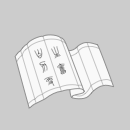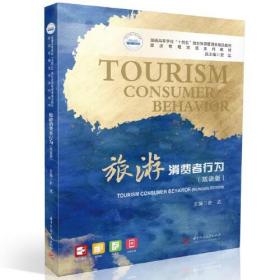
旅游消费者行为(双语版)
全新正版 极速发货
¥ 40.75 6.8折 ¥ 59.8 全新
库存5件
广东广州
认证卖家担保交易快速发货售后保障
作者史达
出版社华中科技大学
ISBN9787568089401
出版时间2023-08
装帧其他
开本其他
定价59.8元
货号1203006497
上书时间2024-06-09
- 最新上架
商品详情
- 品相描述:全新
- 商品描述
-
作者简介
史达,男,经济学博士,教授,博士生导师。东北财经大学萨里国际学院院长。英国曼彻斯特大学访问学者,加拿大西安大略大学访问学者。霍英东教育基金会高等院校青年教师奖获得者。先后担任国家自然科学基金项目主持人、国家社会科学基金项目主持人,中国旅游协会旅游教育分会副会长,教育部高校旅游管理类专业教学指导委员会委员。辽宁省旅游管理类专业教学指导委员会主任。《旅游科学》编委会成员,《旅游研究》编委会成员。在InternationalJournalofContemporaryHospitalityManagement,JournalofHospitalityandTourismResearch,CornellHospitalityQuarterly,JournalofDestinationMarketingandManagement,《南开管理评论》《财贸经济》《政治学研究》《旅游学刊》等SSCI和CSSCI期刊发表论文30余篇,主持编写《辽宁省文化和旅游建设标准体系建设指南》等多项省(市)级地方标准。
目录
目录
Chapter 1 Introduction /001
1.1 What is tourism consumer behavior? /002
1.1.1 The Features of Tourism Consumption /003
1.1.2 The Definition of Tourism Consumer Behavior /004
1.1.3 The Elements of Tourism Consumer Behavior /005
1.1.4 How Tourism Consumer Behavior Changed over the Time /007
1.2 How to learn tourism consumer behavior? /011
1.2.1 The Theories Apply to Tourism Consumer Behavior /011
1.2.2 The Approaches to Explore Tourism Consumer Behavior /017
1.2.3 The Factors that Influence the Tourism Consumer Behavior /020
1.3 Why the understanding of tourism consumer behavior is
important? /023
1.3.1 Government Perspective /024
1.3.2 Business Perspective /024
1.3.3 Community Perspective /025
Chapter 2 Tourism Consumer Perception /027
2.1 Tourism Consumer Sensation /029
2.1.1 The Meaning and Category of Tourism Consumer Sensation /029
2.1.2 The Characteristics of Tourism Consumer Sensation /033
2.2 Tourism Consumer Perception /034
2.2.1 The Meaning of Tourism Consumer Perception: Perception
Versus Sensation /034
2.2.2 The Characteristics of Tourism Consumer Perception /035
2.3 Impact Factors and Process of Tourism Consumer Perception /039
2.3.1 Impact Factors of Tourism Consumer Perception /039
2.3.2 Impact Process of Tourism Consumer Perception /043
2.4 Tourism Consumer Destination Perception /044
2.4.1 Tourism Consumer Perception of the Tourist Destination Image /044
2.4.2 Tourism Consumer Perception of the Tourist Destination Elements /046
2.4.3 Tourism Consumer Perception of the Travel Distance and Risk /048
2.5 Marketing Strategy Based on Tourism Consumer Perception /050
2.5.1 Brand Marketing /051
2.5.2 Tourism Experience Marketing /051
2.5.3 Embedded Advertising /052
Chapter 3 Learning and Memory /054
3.1 Learning /055
3.1.1 The Nature of Tourism Consumer Learning /055
3.1.2 Learning Theory and Application in Tourism /057
3.1.3 The Content of Tourism Consumer Learning /063
3.2 Tourism Memory /065
3.2.1 The Role of Memory in Learning /065
3.2.2 The Memory System /065
3.2.3 The Formation and Characteristics of Tourism Memory /067
3.2.4 Memory Interference and Distortion /072
Chapter 4 Motivation /074
4.1 Tourism Need /075
4.1.1 Overview of Need /076
4.1.2 Theoretical Views of Need Related to Tourism /077
4.1.3 Definition and Characteristics of Tourism Need /079
4.1.4 Models of Tourism Need /080
4.2 Tourism Motivation /082
4.2.1 Definition and Forming of Tourism Motivation /082
4.2.2 Characteristics of Tourism Motivation /084
4.2.3 Theoretical Views of Motivation /087
4.2.4 Classic Theories of Tourism Motivation /089
4.3 Influencing Factors of Tourism Motivation /092
4.3.1 Psychological Factors /092
4.3.2 Objective Factors /093
4.3.3 External Factors /095
4.4 Tourism Demand /096
4.4.1 Definition of Tourism Demand /097
4.4.2 Influencing Factors of Tourism Demand /097
4.4.3 Objective Obstacles to Realizing Tourism Demand /098
Chapter 5 Attitude and Emotion /101
5.1 Chapter Introduction /102
5.2 Attitude /103
5.2.1 Tourist Attitude /103
5.2.2 Tourist Attitude Components /104
5.2.3 The Multiattribute Attitude Model /105
5.2.4 The ABC Model of Attitudes /106
5.2.5 Tourist Attitudes and the Theory of Planned Behavior (TPB) /107
5.2.6 Types of Tourism and Tourist Attitudes /109
5.2.7 Tourism and Changing Tourists’ Attitudes /114
5.3 Emotion and Tourism /116
5.3.1 Tourists’ Emotions /116
5.3.2 Tourists’ Emotions and Destination Marketing /117
5.3.3 Types of Emotions /118
5.3.4 The Cognitive Appraisal Theory in Tourism /123
Chapter 6 Tourism Consumer Personality /126
6.1 What is the tourist personality? /127
6.1.1 The Definition of the Tourist Personality /127
6.1.2 The Features of the Tourist Personality /128
6.1.3 The Inter?structure of the Tourist Personality /129
6.1.4 The Factors Influencing Personality Formation and Development /131
6.1.5 Classification of Tourism Consumer Personality /133
6.2 The Primary Theories of the Tourist Personality /137
6.2.1 Freud’s Theory of Psychoanalysis /137
6.2.2 Jung’s Theory of Personality Types /138
6.2.3 The New Freudian Theory of Personality /139
6.2.4 The Trait Theory /140
6.2.5 The Big Five Personality Model /141
6.2.6 Plog’s Theory of Tourists’ Typology /142
6.3 The Self?concept of Tourists /142
6.3.1 The Definition of Tourists’ Self?concept /142
6.3.2 The Factors that Influence Tourists’ Self?concept /143
6.3.3 The Composition of Self?concept /144
6.3.4 Self?concept and the Symbolism of Tourism Consumption /145
6.4 Self?consistency and Travel Destination Selection /147
6.4.1 The Definition of Self?consistency /147
6.4.2 Application of the Self?consistency Theory in Tourism /149
Chapter 7 The Impacts of Technology on Tourism
Consumer Behavior /152
7.1 Technology Types and Their Applications in Tourism /153
7.1.1 Portable Devices: Audio Guides, Heritage Interpreters, Translators /153
7.1.2 Immersive Experience Equipment: Augmented Reality,
Virtual Reality, Holographic Projection /155
7.1.3 AI Robots /159
7.1.4 Big Data /161
7.2 Technology Impacts on the Tourism Industry /162
7.2.1 The Tourism Industry Perspective /162
7.2.2 The Tourism Products Perspective /163
7.2.3 The Tourist Perspective /165
7.2.4 The Tourism Practitioner Perspective /166
7.3 Technological Impacts on Tourism Consumers’Behavior at
Different Stages of Tourism /168
7.3.1 Pre?tourism /168
7.3.2 During Tourism /170
7.3.3 Post?tourism /172
Chapter 8 Reference Groups /174
8.1 The Definitions of Reference Groups /177
8.2 Types of Reference Groups /177
8.2.1 Primary Reference Groups and Secondary Reference Groups /177
8.2.2 Aspirational Groups, Associative Groups and Dissociative groups /178
8.3 Social Influence Theories /178
8.3.1 Self?concept /178
8.3.2 Self?psychology /179
8.3.3 Conformity /179
8.3.4 Existential Phenomenology /181
8.3.5 Social Comparison /181
8.3.6 Social Psychology /181
8.3.7 Other Theories /181
8.4 Reference Groups Influence /182
8.4.1 Informational Influence /182
8.4.2 Utilitarian Influence /183
8.4.3 Value Expressive Influence /183
8.4.4 Normative Influence /183
8.4.5 Comparative Influence /184
8.5 The Power of Reference Groups /184
8.5.1 Referent Power /184
8.5.2 Legitimate Power /184
8.5.3 Information Power /184
8.5.4 Expert Power /185
8.5.5 Reward Power /185
8.5.6 Coercive Power /185
8.6 Factors Determining the Influence of the Reference Groups /185
8.6.1 The Characteristics of the Product /185
8.6.2 Consumer Characteristics /186
8.6.3 The Characteristics of the Reference Groups /186
8.7 The Application of the Reference Groups in Tourism Marketing /187
8.7.1 Celebrity Effect /187
8.7.2 Expert Effect /188
8.7.3 Word?of?mouth (WOM) Communication /188
8.7.4 Key Opinion Leaders (KOLs) and Key Opinion Customers (KOCs) /189
8.8 Family Influence /190
8.8.1 The Family Life Cycle /190
8.8.2 Roles and Decision?making in the Family /192
8.8.3 Intergenerational Influence /193
Chapter 9 Culture /195
9.1 Culture and Tourism Consumer Behavior /196
9.1.1 The Meaning of Culture /196
9.1.2 The Characteristics of Culture /197
9.2 Subculture and Tourism Consumer Behavior /200
9.2.1 Overview of Subculture /200
9.2.2 The Influence of Subculture on Tourism Consumer Behavior /201
9.3 Cultural Differences and Tourism Consumer Behavior /204
9.3.1 The Measurement of Cultural Differences /204
9.3.2 The Influence of Cultural Differences on Tourism Consumer Behavior /208
9.4 Traditional Chinese Culture and Tourism Consumer Behavior /212
9.4.1 The Spirit of Traditional Chinese Culture /212
9.4.2 Brand Strategies for Tourism Enterprises Based on Chinese Cultural
Characteristics /215
Chapter 10 Marketing and Tourism Consumer Behavior /218
10.1 Tourism Products and Tourism Consumer Behavior /220
10.1.1 Understanding Tourism Products /220
10.1.2 Tourism Product Life Cycle /223
10.1.3 Tourism Product Brand /226
10.2 Tourism Price and Tourism Consumer Behavior /229
10.2.1 Understanding Tourism Price /229
10.2.2 Tourism Product Pricing /232
10.3 Tourism Distribution Channels and Tourism Consumer
Behavior /234
10.3.1 The Definition of Tourism Distribution Channels /234
10.3.2 Types of Tourism Distribution Channels and Tourism Consumer
Behavior /235
10.3.3 Tourism Intermediaries and Tourism Consumer Behavior /239
10.4 Tourism Promotion and Tourism Consumer Behavior /240
10.4.1 The Definition of Tourism Promotion /240
10.4.2 The Role of Tourism Promotion /240
10.4.3 Tourism Promotion Mix and Tourism Consumer Behavior /241
10.5 Marketing Innovation and Tourism Consumer Behavior /242
10.5.1 Internet Marketing and Tourism Consumer Behavior /242
10.5.2 Green Marketing and Tourism Consumer Behavior /243
10.5.3 Cultural Marketing and Tourism Consumer Behavior /243
10.5.4 KOL Marketing and Tourism Consumer Behavior /244
C
相关推荐
— 没有更多了 —



















以下为对购买帮助不大的评价